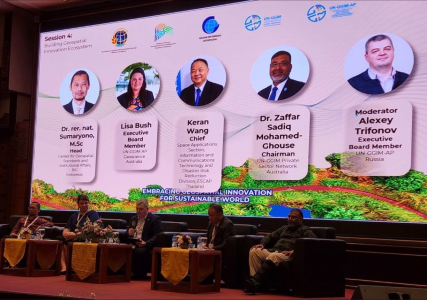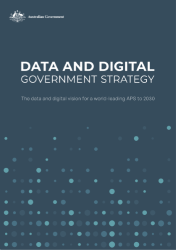Highlights from ANZLIC's November 2023 meeting
The last ANZLIC meeting of the year, hosted in Canberra at the Geoscience Australia offices, had a packed agenda with presentations and updates on key initiatives.
Geospatial Leadership

Dr. James Johnson, the CEO of Geoscience Australia, shared insights from his recent European visit, focusing on Geospatial Leadership and Australia's current geospatial landscape. He explored the Netherlands' advanced geospatial knowledge infrastructure, underpinned by a legislated framework, and the UK's Geospatial Commission, tasked with setting national policy and strategy. The discussion also touched on the UK Ordnance Survey, a government-owned company, addressing government data provision while ensuring financial sustainability. The US model, highlighted by the Geospatial Data Act 2018, was also part of the conversation.
Dr. Johnson identified gaps in Australia's geospatial landscape, emphasising the absence of a National Spatial Data Infrastructure, policy or legislation, and a National Strategy. Member discussions revolved around the need for a National Strategy to balance guidance without imposing undue obligations, and the positive momentum in investment and support for geospatial activities across jurisdictions.
Space and Spatial Industry Growth Roadmap 2030

Glenn Cockerton and Allison Kealy provided a comprehensive update on the changes to the Roadmap due to
shifts in government priorities and funding. Initially motivated by a robust vision, the Roadmap's progress saw the establishment of the Geospatial Council of Australia and the formulation of 9 core objectives.
However, recent adjustments, including the discontinuation of the National Space Mission and shifts in the Australian Space Agency's role, prompted a reevaluation. Despite these changes, key priorities persist: a National Blueprint for Space and Spatial Industries, industry policy, R&D, workforce growth, Digital Twins support, enhanced PNT capabilities, sovereign capability development, defense reliance on space, and ongoing investment in National Mapping and Foundation Spatial Data.
The Roadmap is being strategically repositioned to align with critical government agendas like achieving a NetZero economy, enhancing security, protecting infrastructure, and managing emergencies, while reinforcing the case for Australia's Space and Spatial Sovereign capability.
12th Plenary Meeting of United Nations Global Geospatial Information Management for Asia and the Pacific

Lisa Bush and Dr. Zaffar Sadiq Mohamed-Ghouse shared key takeaways from the 12th Plenary Meeting of United Nations Global Geospatial Information Management for Asia and The Pacific (UNGGIM-AP) in Indonesia from 6-10 November.
In her capacity as the Australian government representative and UNGGIM-AP Executive Board member, Lisa highlighted the impressive innovation initiatives from across the region including China's remarkable reduction of its national mapping program from 12 years to under 1 year. Three new countries, Fiji, Nepal, and China, where also accepted into the UNGGIM-AP Executive Board.
Australia's active engagement was further demonstrated by its formal inclusion in Working Group 2, Cadastre and Land Management. Australia secured the privilege of hosting the upcoming UNGGIM-AP Executive Board meeting in May 2024, coinciding with Locate24 in Sydney.
As elected chair of the UNGGIM Private Sector Network's (PSN), Dr Mohamed-Ghouse outlined the UNGGIM PSN’s purpose and construct, along with the newly established regional group of the PSN for the Asia-Pacific.
Australian Government’s Data and Digital Government Strategy

John Shepherd and Andrew Lalor from the Australian Government Department of Finance provided an update on the Data and Digital Government Strategy (DDGS). The draft Strategy, published in May for public consultation, is currently being finalised and will be published by the end of 2023.
An Implementation Plan, set to be released at the same time, will track progress and identify new initiatives to be delivered in the next period. This Plan was also highlighted as an optimal avenue to drive spatial priorities.